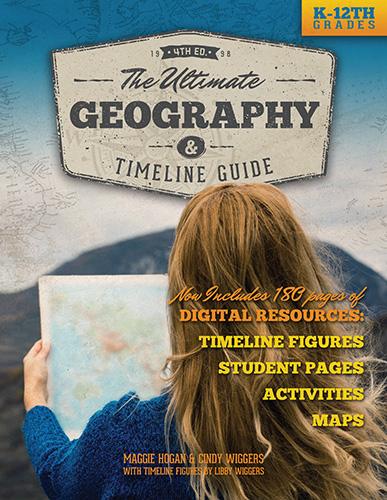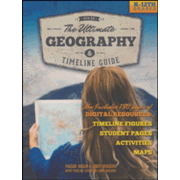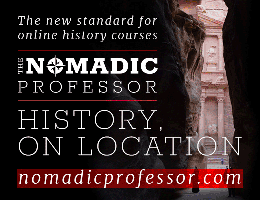Maggie Hogan, author of Hands-On Geography, and Cindy Wiggers of Geography Matters have combined their wisdom and experience to put together this resource book for teaching geography to children in kindergarten through twelfth grade. The fourth edition (2018) includes a free downloadable file with 180 printable pages that are essential for the activities in the book. While the book itself is for the teacher to use, the printable pages provide ready-to-use resources for students. An index to the digital resources is in the appendix of the book. It might take a bit of time to explore the wealth of options found here, but there's a shortcut on page ix.
A one-page "Yearly Guide" shows on a chart which pages to use with five different age groups over a school year. Younger students will do much less than older students. The chart also schedules activities so that there is little overlap from year to year. You might go through the book with the same student two or three times, shifting to other activities each year and reviewing or going further in depth on basic information.
The first chapter, “Getting Started,” suggests basic teaching methods, describes notebooks that students can create, and recommends basic supplies. Chapter 2 is a primer on geography. It covers basic terminology and concepts, including the five themes of geography identified by the national standards for geography: location, place, relationships, movement, and regions. Hogan and Wiggers show you how to incorporate the five themes into your lessons. Chapter 3 is all about maps: different types, how to use them, map games, and more. Chapters 4 and 5 focus on fun, games, and food as tools for teaching and enjoying geography. Here’s where you can learn about letterboxing, geocaching, and trucker buddies—all of which sound like great fun. All of this is in just the first five chapters!
Chapters 6 through 10 explain how to teach geography through other subject areas. This is especially important since Hogan and Wiggers are unit study fans, and unit studies are all about following themes across multiple subject areas. Geography is an ideal subject to include within unit studies since geographical information is almost always more interesting when learned within a meaningful context. To help you dip your toes into unit studies, the authors include two complete unit studies, one on volcanoes and one on the book Hans Brinker or the Silver Skates.
Chapter 11 adds tips on teaching geography using the internet. Updated in 2018, this chapter has seven pages of specific recommendations including YouTube channels, reference sites, and many sites listed under the headings of geography, history, and science.
Chapters 12 through 14 present what most people think of as the nuts and bolts of geography: mapwork and the study of geographical features such as climate, vegetation, natural resources, etc. Chapters 13 and 14 both cover the continents but with different assignments suitable to each range of grade levels. Many of the printable pages that you access online have the maps and specific assignments for these two chapters. Chapter 14 differs from the other chapters since it also has sets of questions for students to answer plus ten essay questions from which two or three can be chosen by teens or parents. Answer keys for the sets of questions are in an appendix.
Chapter 15 is all about timelines. It explains why to use them and how to create them. Printable pages are included for the timeline itself, timeline figures, and timeline games. An especially fun feature is the “Who Am I?” game which uses cards created from some of the printable pages.
In addition to resources for timelines and map work, the printable pages include some for record keeping plus activity sheets for games, weather reports, research, and other activities.
The appendix includes even more useful resources. There are two lists for the timeline figures—one arranged alphabetically and the other chronologically. These lists should help you easily identify appropriate images as students create their timelines. There are also a geography glossary and a book index.
Since parents have to organize lessons and select which resources to use, The Ultimate Geography and Timeline Guide requires more preparation work than traditional geography courses. But the payoff is a flexible, customizable way to teach geography to all ages that should be enjoyable for students.











